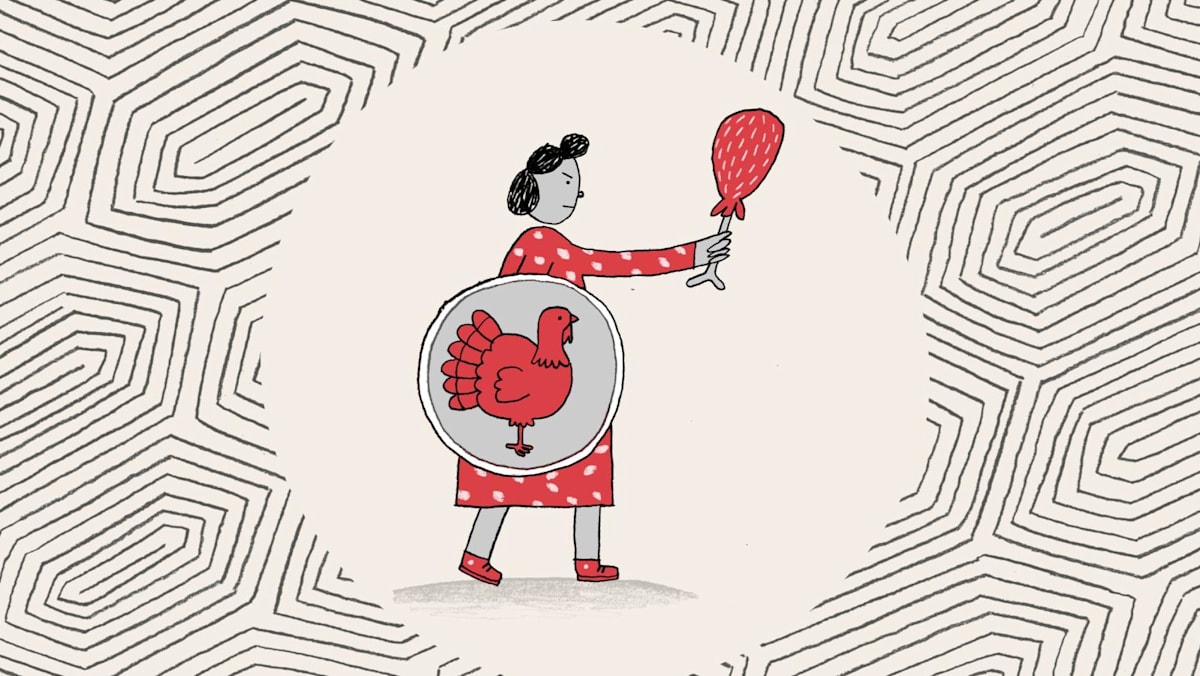Highs and lows in mood, focus and memory throughout the menstrual cycle. Forgetfulness during pregnancy. Brain fog and hot flushes as menopause approaches. And of course, remember those teenage years, when you were highly emotional and moody?
You can blame all these on the two main female hormones, oestrogen and progesterone, which affect our brains in a big way.
Dr Zhao Yi Jing, a neurologist from Mount Elizabeth Hospital, said: “These (hormones) affect how our brain adapts, grows and communicates, and can impact our learning, memory, mood and overall brain health.”
She explained that oestrogen and progesterone have a distinct impact on the parts of the brain that store memories (the hippocampus), helps to process emotions (amygdala) and governs our ability to plan and make decisions (prefrontal cortex).
This is why we get cognitive issues like brain fog or behavioural changes such as irritability, during big hormonal fluctuations – puberty, pregnancy or postpartum, our menstrual period and menopause.
THE FEMALE BRAIN DURING PUBERTY
Differences in how the female and male brain develop are first seen during puberty, specifically in the limbic system, which is made up of interconnected brain structures that regulate our behaviour and emotional responses.
Dr Zhao said there are more receptors for female hormones in the limbic system than other areas of the brain, which explains why teenage girls are more susceptible to mood changes.
Boys, on the other hand, are more influenced by testosterone, the male hormone, which tends to act on different parts of the brain, and not as much in emotion-controlled areas.
“This results in girls having greater difficulties in emotion regulation and increased vulnerability to mood disturbances,” she added.
 Changes in a teenage girl’s brain affect her ability to regulate her emotions and make her more vulnerable to mood changes. (Photo: iStock/Kak Iki)
Changes in a teenage girl’s brain affect her ability to regulate her emotions and make her more vulnerable to mood changes. (Photo: iStock/Kak Iki)
As the female adolescent brain matures, girls achieve improved brain function and become capable of regulating their emotions, said Dr Zhao. This is due to neuroplasticity, or the brain’s ability to adapt to new experiences and information.
Dr Juliet Tan, a paediatrician at KK Women’s and Children’s Hospital’s Adolescent Medicine Service, said all adolescent brains undergo significant grey matter changes (called ‘pruning’) during puberty. Grey matter consists of tissues in the brain and spinal cord, and is responsible for processing information.
Studies have observed gender differences in the brain’s response to sex hormones, said Dr Tan, who specialises in adolescent medicine. For example, oestrogen boosts the brain’s production of corticotropin-releasing hormone (CRH), which controls how the body reacts to stress.
“When the brain perceives a threat, CRH is released,” said Dr Tan. “As such, teenage girls who have had their first period may be more susceptible to stress at certain points during their menstrual cycle due to fluctuating oestrogen levels.
“In contrast, increased testosterone levels in teenage boys reduces the release of CRH, making them less sensitive to stress compared with their female counterparts,” she added.
UPS AND DOWNS THROUGHOUT THE MENSTRUAL CYCLE
There are four phases in a menstrual cycle. First, you have your period, followed by the follicular phase (around 14 days from the start of your period). Next comes ovulation, when a mature egg is released from an ovary, around Day 14 in a 28-day menstrual cycle.
Lastly, the luteal phase, which is when the egg travels through the fallopian tubes to the uterus and the uterine lining thickens for pregnancy. This is usually Day 15-28 of your cycle.
 A rise in oestrogen before ovulation gives a woman more energy, better imagination and clarity, and makes her feel more sociable. (Photo: iStock/FreshSplash)
A rise in oestrogen before ovulation gives a woman more energy, better imagination and clarity, and makes her feel more sociable. (Photo: iStock/FreshSplash)
Dr Grace Huang, a general practitioner at DTAP Clinic, said: “Oestrogen, which peaks in the first half of the cycle, enhances brain plasticity (the brain’s ability to adapt), improving memory, focus and mood.”
Aside from better memory, women can expect a more social demeanour and improved ability to perform tasks such as planning and solving problems, just before ovulation, said Mount Elizabeth Hospital’s Dr Zhao.
Ovulation makes you feel happier, more attractive and increases sexual desire. You’re likely to have more energy, a better imagination, and have a clear mind.
During the luteal phase, post-ovulation, Dr Huang said that progesterone initially rises, influencing cognition and mood regulation.
You could feel heightened emotional sensitivity, irritability and negative mood changes, Dr Zhao added.
However, progesterone dips in the latter half of this phase, leading to symptoms associated with pre-menstrual syndrome (PMS). You could have difficulty sleeping or concentrating, as well as feel anxious or sad. Your appetite could be affected too.
‘PREGNANCY BRAIN’ IS A REAL THING
The steady rise of oestrogen and progesterone throughout pregnancy has both positive and negative effects on the brain.
Dr June Tan Sheren, consultant family physician at Tucker Medical, said: “The research is relatively recent and limited, but it appears that pregnancy, with its hormonal surges, brings about a reduction in grey matter, amongst other changes in areas related to social cognition.”
These changes might enable women to “transition to motherhood and maternal care”, and bond better with their baby, she added.
 Hormonal surges during pregnancy have both positive and negative effects on the brain. (Photo: iStock/Nikola Stojadinovic)
Hormonal surges during pregnancy have both positive and negative effects on the brain. (Photo: iStock/Nikola Stojadinovic)
However, hormonal surges and brain volume changes have a downside: They have been linked to changes in memory, attention and processing speed. ‘Pregnancy brain’, where the mother seems to be extra forgetful, is real.
DTAP Clinic’s Dr Huang said that research based on magnetic resonance imaging (MRI) scans shows that the brain starts to revert to its pre-pregnancy state in the first few months after giving birth, but certain changes can still be seen years later.
HOW MENOPAUSE CHANGES THE BRAIN
Once women hit menopause, both oestrogen and progesterone decrease significantly. As a result, areas of the brain that are critical for brain function, such as memory, mood regulation and other functions are affected, said Dr Zhao.
She cited a 2022 study among Singapore Chinese women, which showed that shorter reproductive years and earlier menopause were associated with a higher risk of late-life cognitive impairment – having issues concentrating, remembering or solving problems.
Tucker Medical’s Dr Sheren said changes in a woman’s brain during the menopause transition manifests in perimenopause symptoms. For example, women may notice changes in cognitive abilities, such as memory issues, reduced processing speed, lacking focus or concentration – known as ‘brain fog’.
“Up to two-thirds of women in perimenopause report memory problems, which may show up as losing track of what you were about to do, loss of words, missing appointments, getting easily distracted, misplacing things and experiencing gaps in time or memory,” said Dr Sheren.
“Fortunately, research has shown that these changes are usually temporary and improve after menopause.”
However, there’s no clear indication on when this might be, as there is great variation in women’s experiences of menopause, said Dr Sheren. She cited an American study that found that the median length of time women endured hot flushes or night sweats (vasomotor symptoms or VMS) was 7.4 years.
“Since VMS and brain fog are related, it is possible that the cognitive changes can last years before they get better, when our brains adapt to a new norm and develop compensatory mechanisms,” she added.
 The drop in oestrogen levels during menopause contributes to hot flushes and night sweats. (Photo: iStock/pocketlight)
The drop in oestrogen levels during menopause contributes to hot flushes and night sweats. (Photo: iStock/pocketlight)
Those hot flushes during menopause? They’re a result of brain changes too – oestrogen affects how nerve cells connect with each other in the brain, said Dr Sheren.
She added: “Oestrogen decline contributes to VMS, the classic hot flushes and night sweats in menopause, by affecting the part of the brain that regulates temperature. There is recent evidence that VMS alone impacts cognition.”
Cold flushes or chills may be more apparent in some women. Dr Sheren says this is all part of the same process of temperature dysregulation – a malfunctioning body thermostat in the brain.
A drop in oestrogen also influences women’s risk of cognitive conditions such as dementia.
Dr Sheren stressed that, when women go through menopause naturally, there is no clear evidence that their cognitive symptoms indicate early dementia or puts them at higher risk of neurodegenerative conditions like Alzheimer’s disease.
“However, that is not the case for women in premature menopause – women hitting menopause before the age of 40 – or surgical menopause, which occurs when women have their ovaries removed through surgery, leading to a sudden onset of menopause,” said Dr Sheren.
“According to studies, surgical premature or early menopause increases the risk of Alzheimer’s by a staggering 70 per cent.”
CNA Women is a section on CNA Lifestyle that seeks to inform, empower and inspire the modern woman. If you have women-related news, issues and ideas to share with us, email CNAWomen [at] mediacorp.com.sg.


















































